Potsdam – New Palace (Neues Palais)
The New Palace is situated on the western side of the Sanssouci royal park in Potsdam was build by Frederick the Great. The construction of the palace started 1763 and was finished after six years, 1769. It is considered to be the last great Prussian baroque palace.
Potsdam – Orangery Palace
The Orangery Palace (Orangerieschloss) is also known as the New Orangery on the Klausberg, or just the Orangery. It was built in the style of the Italian Renaissance, after the image of the Villa Medici in Rome and the Uffizi in Florence.
Potsdam – Park Sanssouci
Sanssouci Park is a large park surrounding Sanssouci Palace in Potsdam, Germany. Following the terracing of the vineyard and the completion of the palace, the surrounding is a baroque flower garden with lawns, flower beds, hedges and trees. The greenhouses of the numerous nurseries contained oranges, melons, peaches and bananas.
The park has a 2.5 km long straight main avenue and begins in the east at the 1748 obelisk and over the years was extended all the way to the New Palace, which marks its end in the west.
Potsdam – Church of Peace (Friedenskirche)
The Friedenskirch (Church of Peace) is a protestant church and is situated in the palace grounds of Sanssouci Park in Potsdam, Germany. The cornerstone of the churchhouse was laid on April 14, 1845 and the structure resembles a High Italian monastery. A narthex across the western side of the portal opens into an inner courtyard (atrium), in the middle of the courtyard the larger-than-life statue of Christ on the fountain is a copy of the marble original and an arcade surrounds the inner courtyard. Parallel to the southern arcade runs the cloister with the Heilsbronn Porch, an entrance to the Marly Gardens. The Heilsbronn Porch is a replica of a Roman tiered porch at the former refectory in the Heilsbronn Cloister in Middle Franconia.
Berlin
Berlin is with a population of 3.45 million people the largest city of Germany and is the residence for over 190 nations. The city is the home of renowned universities and research institutes. Furthermore, Berlin shelters great culture, like museums, orchestra and sporting events. The city is famous for the diverse architecture, nightlife and contemporary arts. Its unique and urban settings,plus historical legacy have made it a popular location for international film productions.
Need a bike?
The bicycle sharing system makes numbers of bicycles available as a mobility service in different german cities.
Berlin – Potsdamer Platz
The Potsdamer Platz is a public square and traffic intersection in the centre of Berlin, Germany and the history can be tracked back to the year 1685.
In 1924 one of the first traffic lights in Continental Europe were built at Potsdamer Platz in an attempt to control the sheer volume of traffic passing through. More than 100.000 people and more than 60.000 cars, horse-drawn vehicles, handcarts and bycicles passed the place daily.
During World War II almost all of the buildings around Potsdamer Platz were turned to rubble by air raids and heavy artillery bombardment, but commercial life reappeared in the ruins around Potsdamer Platz within just a few weeks of war’s end.
1961, the construction of the Berliner Wall found the Potsdamer Platz physically divided in two peaces and became totally desolate. Only two buildings in the immediate vicinity of Potsdamer Platz still stood in the east part of Berlin. Below ground, the S-Bahn line remained open, without stopping at Potsdamer Platz. Therefore, the trains briefly passed through East German territory en route from one part of West Berlin to another and the S-Bahn station became the most infamous of several Geisterbahnhöfe (ghost stations).
After the opening of the Berliner Wall in 1989, Potsdamer Platz was one of the first places to cross the border between East and West Berlin. Nowadays, the square became the focus of attention again and became the key area where the city had an opportunity to express itself.
